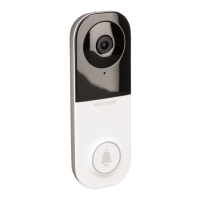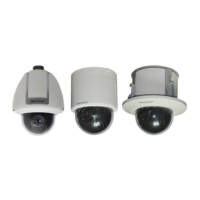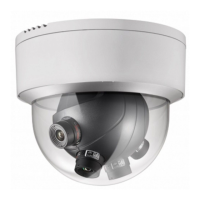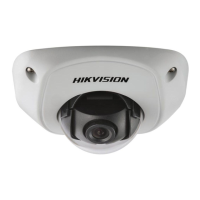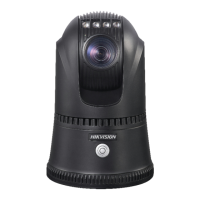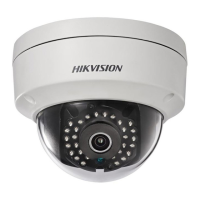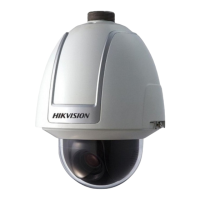
Do you have a question about the HIKVISION DS-2 Series and is the answer not in the manual?
| Category | Security Camera |
|---|---|
| Operating Temperature | -30 °C to 60 °C (-22 °F to 140 °F) |
| Max. Resolution | 1920x1080 |
| IR Range | Up to 30 m |
| Video Compression | H.264+/H.264 |
| Ingress Protection | IP67 |
| Power Supply | 12 VDC ± 25%/PoE (802.3af) |
| Network Interface | RJ45 10M/100M self-adaptive Ethernet port |
| Series | DS-2 Series |
Compliance with FCC rules for digital devices and radio frequency energy.
Compliance with EU directives including WEEE and battery directives.
Critical safeguards to prevent serious injury or death from electrical hazards and improper use.
Precautions to prevent potential injury or equipment damage from environmental factors and handling.
Overview of the speed dome's capabilities and applications in surveillance.
Lists key functions including OSD, protocols, controls, and basic operations of the speed dome.
Details the self-test sequence and system information display upon powering the speed dome.
Explains how to control the speed dome using external devices like keyboards and DVRs.
Lists system presets with special functions that can be activated but not modified.
Describes the information displayed on the screen, such as zoom, direction, and time.
Guide on navigating the speed dome's on-screen display (OSD) menu via DVR or browser.
Instructions for checking and modifying system parameters like address, protocol, and time.
Sets camera parameters like focus, zoom, shutter speed, iris, gain, and image quality.
Details settings for PTZ movements, presets, patrols, patterns, and time tasks.
Explains how to enable and configure smart tracking for automatic object tracking.
Details configuring alarm inputs, linked actions, priorities, and parameters.
Contains miscellaneous settings like language selection, dome authentication, and restoring defaults.
Automatically rotates the dome 180 degrees horizontally for tracking when a target goes beneath it.
Adjusts pan/tilt speeds proportionally to zoom amount to maintain image stability.
Configures automatic actions (scan, preset, patrol) after a period of inactivity.
Allows editing of text labels associated with specific presets.
Defines the exact pan, tilt, and zoom position for a preset.
Clears the settings for the currently selected preset.
Selects and activates a predefined preset position.
Guides on setting up a patrol sequence using defined presets with dwell times and speeds.
Modifies the sequence of presets, dwell times, and speeds within a patrol.
Allows previewing the configured patrol sequence to verify its operation.
Removes a selected patrol sequence from the system.
Guides on creating a pattern by recording PTZ movements and lens operations.
Modifies the recorded movement path and lens operations for a pattern.
Allows previewing the recorded movement pattern.
Clears chosen or all defined movement patterns.
Configures scheduled actions to be performed automatically at specific times and days.
Allows previewing the configured scheduled tasks, showing time, action, and status.
Removes a specific scheduled task from the system.
Divides the scene into zones with labels and enables automatic scanning within zones.
Selects the zone number to be configured or edited.
Assigns a text label to a specific zone for identification.
Resets all settings for the currently selected zone.
Accesses the menu for clearing various PTZ control settings and privacy masks.
Confirms clearing actions for presets, patrols, patterns, zones, and time tasks.
Displays self-diagnostics information like temperature, video loss, and communication errors.
Accesses the menu for configuring smart tracking and zoom ratio settings.
Enables the smart tracking function for automatic object tracking.
Sets up alarm inputs, defines linked actions like presets, and assigns alarm priorities.
Sets the status (OPEN, CLOSE, OFF) for alarm input channels.
Specifies actions to be performed when an alarm occurs, like calling presets or patterns.
Assigns priority levels (HIGH, MID, LOW) to alarms for sequential response.
Accesses the menu to configure alarm sequence interval, rest delay, and resume activity.
Sets the time interval between responses to alarms of the same priority.
Defines the delay before the dome responds to a re-triggered alarm input.

